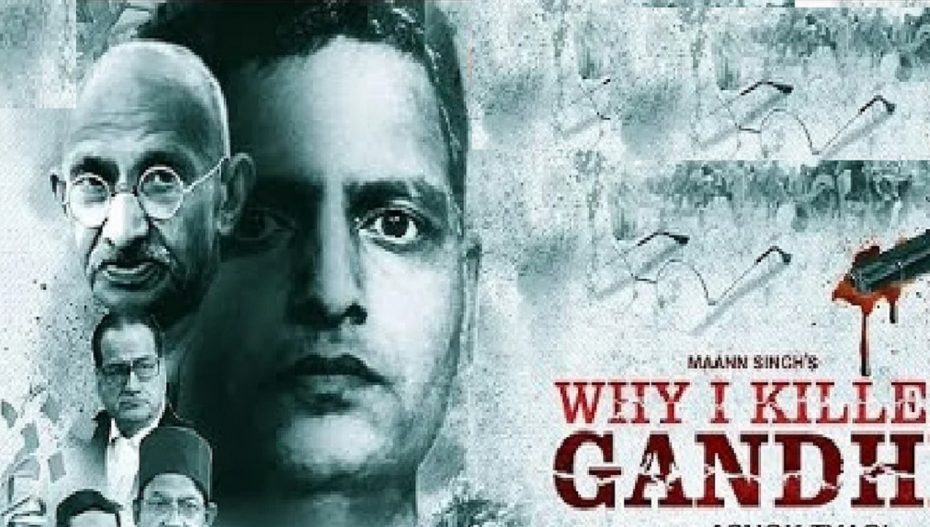The recently released film ‘Why I Killed Gandhi’ is an attempt to glorify Nathuram Godse, the assassin of Mahatma Gandhi. A clip from the film pertaining to Nathuram Godse’s testimony in the Punjab High Court, is in circulation on social media.
In the clip, Godse is shown presenting a completely false account of the incident and giving a communal colour to the entire matter, writes Dr Ram Puniyani.
For a long time, the commonly held belief has been that Mahatma Gandhi did not make any effort to save the life of revolutionary Bhagat Singh. The facts are to the contrary. Viceroy Lord Irwin had said in his farewell speech that Mahatma Gandhi had tried hard to commute Bhagat Singh’s death sentence to life imprisonment. Irwin said on March 26, 1931, “When Mr Gandhi was insisting with great emphasis on me that the punishment be commuted, I was wondering why an ambassador of non-violence was so ardently advocating such people. Those who think completely opposite to his ideology. But I believe that in such matters I cannot allow my decision to be affected by purely political reasons. I cannot imagine any other case in which a person is so directly entitled to the punishment given to him under the law.”
Godse said in his statement that Gandhiji was constantly writing against the revolutionaries. He said that despite their opposition, a resolution was passed in the Congress session praising Bhagat Singh’s sacrifice and patriotism. The truth is that Gandhiji had prepared the draft of the resolution passed by the Congress praising Bhagat Singh. The resolution said that “The Congress while dissociating itself from any form of political violence and not approving it, registers its admiration for the valour and sacrifice of the late Sardar Bhagat Singh and his companions Sukhdev and Rajguru. We are also grieving along with the families who lost these lives. The Congress is of the view that the implementation [by British Crown] of these three death sentences is an act of unprovoked retaliation and they are willfully disregarding the country’s unanimous demand to reduce their punishment.”
Describing the revolutionaries and Gandhi as opposites of each other, Godse also forgets that Gandhiji had also made efforts for the release of the Savarkar brothers. In ‘Collected Works of Mahatma Gandhi’ Volume 20, pages 369-371, an article by Gandhiji is published in which he has said that the Savarkar brothers should be released and they should be allowed to participate in the politics of the country in a non-violent manner.
The video clip being shown on social media, describes Gandhi and Bose as opposites of each other. Gandhi and Bose indeed had differences on some issues but both were fully committed to obtaining India’s independence. Gandhiji had opposed the election of Bose as Congress President in 1939. Bose was in favour of an alliance with Germany and Japan to fight the British. Gandhiji believed that freedom could be achieved by fighting against Britain. Most of the members of the Central Committee of the Congress were with Gandhi in this matter. Despite these differences, both Gandhi and Bose had great respect for each other. When the Quit India Movement started under the leadership of Gandhiji, Bose expressed happiness over it. Bose had sought Gandhiji’s blessings for the success of the Azad Hind Fauj. Bose was the first to use the word ‘Father of the Nation’ for Mahatma and named a detachment of Azad Hind Fauj as Gandhi Battalion. Gandhiji had a sense of respect for Bose and called him ‘Prince among Patriots’. He also went to jail to meet the prisoners of Azad Hind Fauj.
In line with the RSS-Hindu Mahasabha’s propaganda, Godse also alleges that Gandhi was anti-Hindu and pro-Muslim and was responsible for the partition of the country. It is well known that there were many complex reasons behind the partition of the country. Hindu and Muslim communalists left no stone unturned to make the British ‘divide and rule’ policy a success.
Godse’s praise of Bose is nothing more than shedding crocodile tears. When Bose was fighting against the British, the Hindu Mahasabha was running a campaign to recruit Indians in the British Army. Godse’s newspaper ‘Agrani’ had published a cartoon at that time in which Savarkar was shown killing Ravana. Ravana was Mahatma Gandhi and one of his heads was Bose. If Godse was so impressed with the revolutionaries, then who stopped him from joining the Azad Hind Fauj?
Godse accuses Gandhiji of getting Pakistan Rs 55 crore. This 55 crore was Pakistan’s share in the joint treasury of India and Pakistan.













